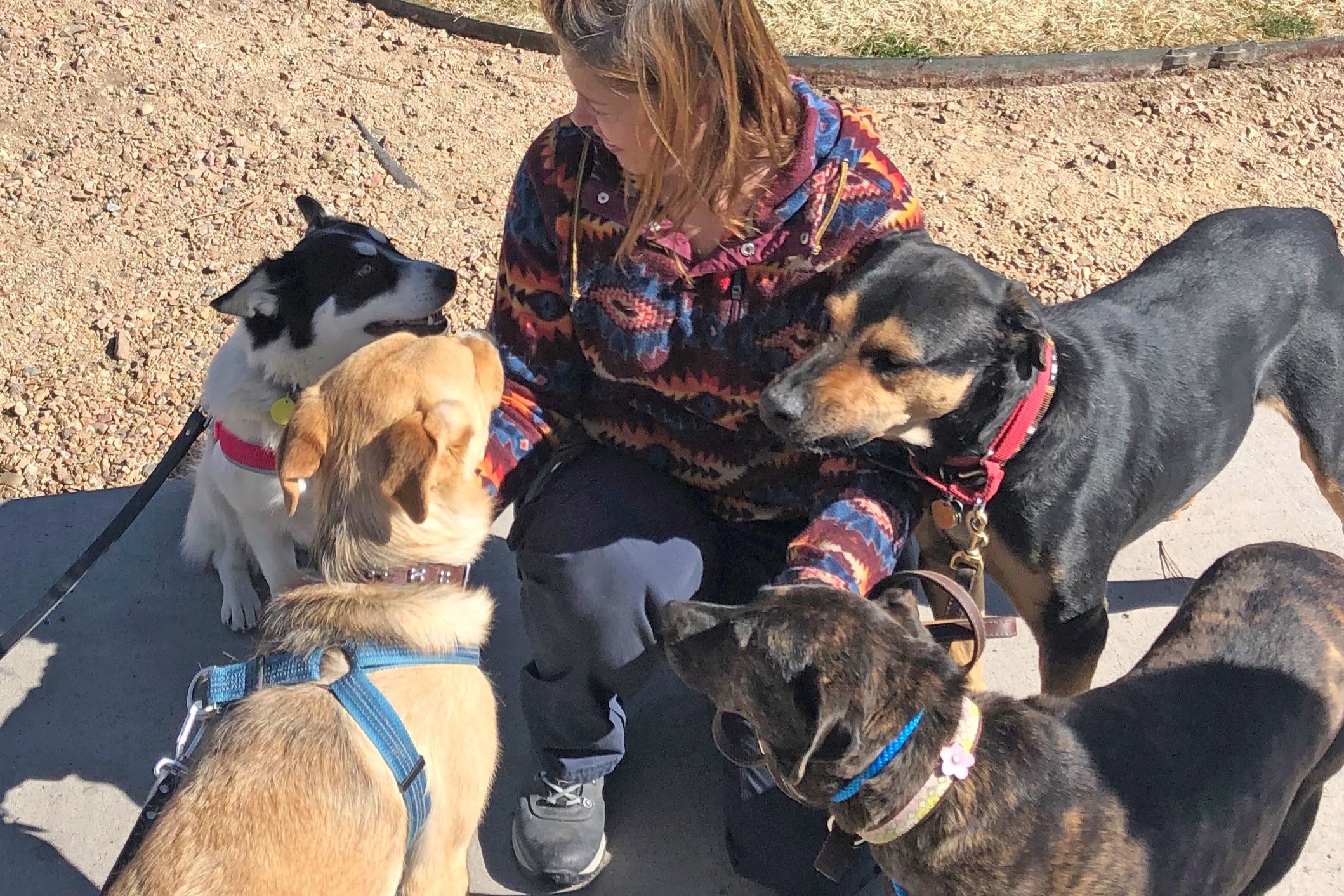
Rehab. Train. Thrive.
Fearful & Feral Dog Rehabilitation
Four previous fearful/feral hoarding case dogs, Alora, Brock, Jade, and Hawkeye, at adoption event hanging out with me. (above)
Train the “un-Trainable” dogs
Do you want to make a real difference in the lives of fearful and feral dogs who have been failed by traditional training methods? I’m Julie Hart, a seasoned expert in rehabilitating and training fearful and feral dogs.
Rehab. Train. Thrive. with Fearful and Feral Dogs
Traditional training methods often fail to address the unique needs of fearful and feral dogs. With scarce resources available in this specialized area, many trainers, rescuers, and dog parents find themselves at a loss when it comes to rehabilitating these vulnerable animals.
Drawing from extensive hands-on experience in foster, rescue, client and shelter environments, I've honed in on what truly works in transforming fearful and feral dogs into happy, thriving companions. Training alone doesn't equate to trust – especially for dogs who have endured trauma from hoarding situations, abuse, or neglect, or those who were once street dogs or feral roamers. These dogs need more than just commands; they need compassionate guidance and unwavering support to overcome their fears.
By working with me, you'll gain invaluable insights and techniques that transcend traditional training dogmas. What trainers, rescuers and parents learn from working with these resilient animals not only transforms the lives of fearful and feral dogs but also enhances their abilities to serve all their clients’ and dogs needs’ – including the more "typical" ones. From communication cues to trust-building techniques, the lessons fearful and feral dogs have taught me have personally empowered me to teach all dogs better, resulting in happier, more well-adjusted canine companion.
Fearful and feral dogs in the USA likely to increase due to importing dogs for adoption from around the world and places like New Mexico.
Many fearful and feral dogs are failed by typical training practices of all methods and dogmas. I get called after people have not been unsuccessful in finding help for their dog. Many people feel quite hopeless when they contact me, thinking their dog cannot improve. I get the pleasure of reassuring them that indeed their dog can improve and I can teach them how.
Training does not equal trust. Dogs need their humans to become trustworthy, so they do not have to live in fear. This has little to do with typical “training’ methods, but relies on a trusting relationship between dog and human.
The dogs I rehabilitate are thriving. They are not merely surviving, living in a small world and secluded to a house or yard. The dogs I work with live like normal dogs, going on walks and hikes, to pet stores and on vacations. They joyfully come when called, and enjoy affection from their people.
To bring fearful and feral dogs into a human world, we must first enter theirs. Getting a fearful dog to use its nose is an often overlooked powerhouse of rehabilitation potential.
How did I get into feral and fearful dog rehab? I live in New Mexico where there are thousands of free-roaming dogs that are on the feral and fearful spectrum. I was called in to a shelter help with a large hoarding case and I became fascinated by what these dogs can teach us and the creativity, empathy and awareness they require to help them, thus they provide an endless challenge. These dogs are truly inspirational and have taught me so much I owe it to them to spread the word of how to help them.
How your Fearful & Feral dogs can Thrive
Online Learning
-

Rehab
Rehabilitation is the action of restoring (a dog) to health or normal life through training and therapy. Rehab cannot happen without trust. Discovering the dog’s interests, and becoming understandable to the dog is a way to earn trust. This does not involve using food or toys, because most fearful dogs will not respond to these. I use the core of DOG to facilitate healing: the nose, exercise, activity, and connection. Trust consists of safety, authenticity, empathy, and fear-less behavior. (Above is Remy, a feral puppy that was at risk for euthanasia at a local shelter, until they called me to help.)
-

Train
I start training the dog how to live in a home as soon as possible. Delaying formal training until the fearful dog has become more trusting can make the training progress much faster and easier on the dog. Formal training includes coming when called and other obedience such as sitting or laying down. Training may also mean exposing the dog to increasingly “scary” surroundings or new people when the dog is ready. But without the foundation of trust, the dog will question its safety in these situations. (above is DD Domingo a previously feral dog that was hit by a car. DD is now adopted and living with her best buds.)
-

Thrive
Thriving, not just surviving. This is where following my training methods really pay off. Your (previously) fearful or feral dog’s world starts to expand exponentially. They become happier, confident, and content instead of scared. They enjoy outings and new experiences. (this photo is Tipton, a completely feral and very leash-fearing dog initially, he is now my dog and enjoys life to its fullest. He loves agility and adventures.)


